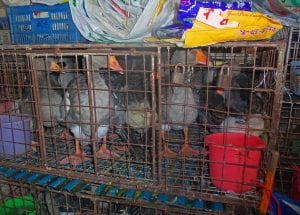If you are paying attention, the world is not a super fun place to be right now.
Donald Trump’s recent reelection has been a source of despair for many who hoped that a Harris presidency would secure LGBT rights, the right to abortion and reproductive health care, and decisive environmental action.
This comes at a time when we’re already experiencing the highest rates of loneliness and isolation ever recorded. The urge to throw in the towel, curl up into a ball and hide from the world is strong. Most people I have talked to in recent weeks say the same. Trump’s reelection feels like a death blow to a vision of a hopeful future already on its last legs.
But it doesn’t have to be.
In the face of isolation, it’s time to build community. In the face of environmental degradation, it’s time to live sustainably. In the face of national failures, it’s time to act locally. It is time to take experimental living seriously.
Experimental living is a fairly broad term that describes movements like the Back to the Land Movement of the 1970s and the cohousing movement of today. But really, experimental living is structuring our lives, primarily in the domestic sphere, differently from societal norms and expectations. Experimental living sounds really broad, but means living all of the calls to action above. It means living in community with others, prioritizing sustainability, participating in local government and living in line with our values.
Given that even dual-income families are struggling to meet expenses, alternatives like co-ops, multi-family housing, and intergenerational intentional communities could be the answer. Cost of both elder and child care can be offset by intergenerational living, multi-family housing allows home ownership even when house prices are prohibitive. Shifting the ideal of adulthood and family from a nuclear family to a broader web of interdependence makes possible other dreams, like home ownership, and strong family bonds.
This may seem like an idealized version of communal living, and it is. No community is without conflict and many family structures fail to provide support, even when living intergenerationally. But these are issues worth working to address seriously, especially when there aren’t other options. Even something as simple as offering or asking help from a neighbor lays groundwork for when there is conflict on a bigger scale.
I am not suggesting that we all immediately sell all our property, move to the country and live out our dreams of communal living, but I am saying, in the face of the pain, social backsliding, and environmental crisis of this era, we should consider it.
There is a Bloom County cartoon that my father and I quote often that goes like so. The first character is listing all of the things that are wrong in the world, and finally ends with “It’s a rotten world!” to which the second replies, “…with great peaches”. In trying times, I try to remember what my peaches are. Community, the people around me, and the hope that there is a better future coming, one with great peaches.



















